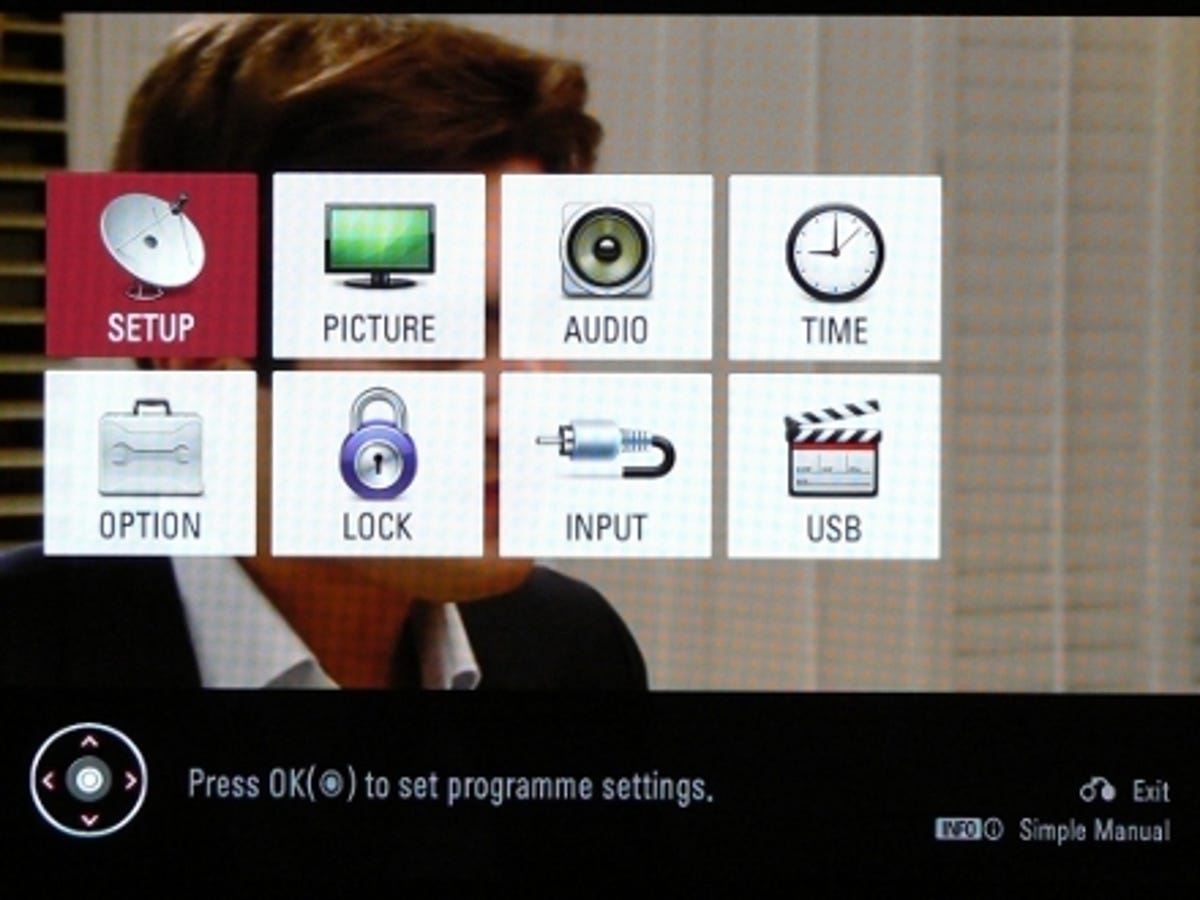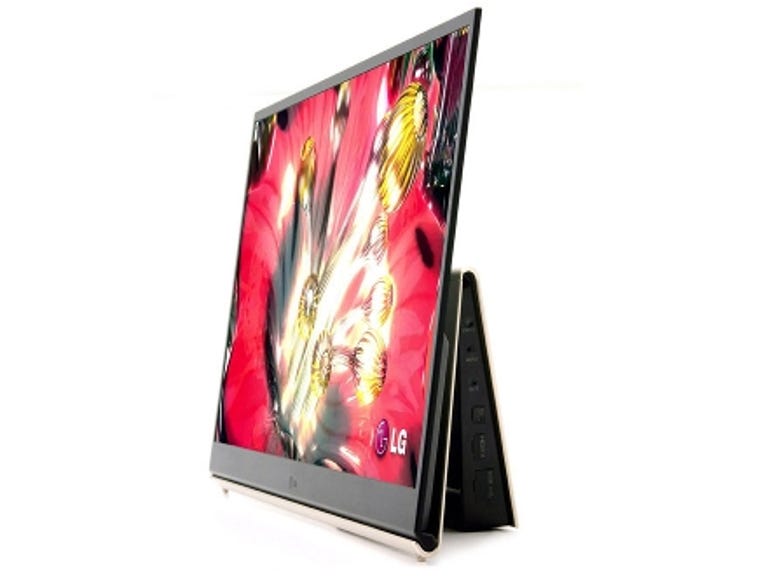 Why You Can Trust CNET
Why You Can Trust CNET LG EL9500 (15EL9500) review: LG EL9500 (15EL9500)
The 15-inch LG 15EL9500 TV is an impressive showcase for OLED technology, but its sky-high price tag and tiny screen mean it isn't exactly ready for prime time.
No, your eyes aren't deceiving you, the LG 15EL9500 really is just 15 inches in size, yet costs a whopping £1,500 or thereabouts. So what is it about this display that makes LG think you should part with the equivalent of £100 per inch of screen space?
The Good
The Bad
The Bottom Line
The high price is due to the fact that the TV uses OLED technology instead of the more familiar plasma or LCD technologies found in other flat-screen sets. In fact, this is only the second TV to hit the UK market using this display technology. The other model was the smaller, 11-inch Sony Bravia XEL-1 which was priced at a staggering £3,500, making the HD Ready 15EL9500 seem like a bargain in comparison.
Ole, Ole, OLED!
OLED is an exciting technology because, unlike traditional LCD displays, it doesn't use a backlight. Instead each pixel is individually lit and, consequently, OLED screens are capable of delivering incredibly deep black levels, as well as searingly bright colours. The lack of a backlight also means that OLED displays can be much, much thinner than traditional plasma or LCD screens.
OLED displays have already started to become relatively common in mobile devices. They're found in Samsung's Galaxy S and Google's Nexus One mobile phones, for example. But manufacturers have had problems scaling the technology up to work at larger screen sizes suitable for use in TVs.
One of the reasons for this is that OLED screens use three organic compounds to produce the red, green and blue colours that form the basis of their pictures. The blue compound has a shorter lifespan than the two other colours. This makes larger screens difficult to produce and leads to more faulty screens rolling off the production lines, which in turns pushes up the cost.
Super-skinny
It's perhaps unsurprising, then, that this set has such a small screen area. When you first take it out of the box, though, it's the screen's skinniness that really takes your breath away -- it's a mere 3mm deep.
The set is quite stylish too, in a minimalistic sort of way. The bezel is very narrow and it's finished in a brushed, black metal finish. Across the bottom, there's a thin, silver line housing the tiny legs that the screen sits on. The display doesn't have a traditional pedestal stand, but instead uses a folding A-frame design. It's at the rear of this frame that you'll find the various connection sockets.

As you'd expect from a TV of this size, there aren't that many ports on offer. In fact, all you get is a mini-HDMI socket and a USB port. There isn't even room for a full-size aerial connector. Instead, you have to use an adaptor cable that houses the connections for both the aerial lead and the power socket (the TV uses an external, laptop-style power supply).
Setting up the TV is a breeze, thanks to the graphically rich menus, which are similar to those found on other recent LG tellies. The TV has a standard hybrid tuner that receives both analogue and digital Freeview broadcasts. It's not compatible with Freeview HD, however, so you can't use it to pick up BBC, ITV and Channel 4 high-definition services. For external sources, you're limited to the single mini-HDMI port. LG supplies an adaptor cable in the box so you can hook it up to standard HDMI devices like a Sky+HD set-top box.
There are no networking or Internet features, but the USB port can be used to play back photos, music and videos from memory sticks or external hard drives. The set supports playback of DivX and DivX HD videos, and we found it would also play some MKV files, as long as we changed the file extension to 'AVI'.
When it comes to OLED TVs, £1,500 doesn't get you a 1080p display. Instead, this TV is limited to an HD Ready, 1,366x768-pixel resolution. You can feed 1080p signals into the set, but they'll be downscaled to fit the native resolution.
Incredible black levels
Get the screen going, though, and you can't help but be impressed by some of OLED technology's inherent benefits. This most obvious of these are the insane black levels. There's simply nothing else out there today that can touch the 15EL9500 on this front. Blacks are black to the extent that, if they're at the edge of the screen, you can't really discern where the display ends and the bezel starts.
Colours are also incredibly bright and vivid, yet still manage to look completely natural. For example, the set can produce some of the most convincing skin tones we've seen on a TV. The 100Hz motion processing also helps pictures to remain refreshingly free of judder and other motion artefacts.
But, while the set's picture quality is truly stunning, audio isn't one of its strong points. The TV uses a pair of tiny speakers that are tucked away on the A-frame stand. As you'd perhaps expect given their size, they sound pretty weedy and are almost totally devoid of bass. While they're okay for listening to soaps and news broadcasts, you wouldn't want to listen to music channels through them.
Conclusion
Perhaps one day all TVs will use the same OLED technology as the LG 15EL9500, but its tiny screen and mammoth price tag indicate that this day is still quite a long way off. The 15EL9500 may be of interest to the super-rich, but, for the rest of us, it's little more than an impressive technology demo.
Edited by Charles Kloet


